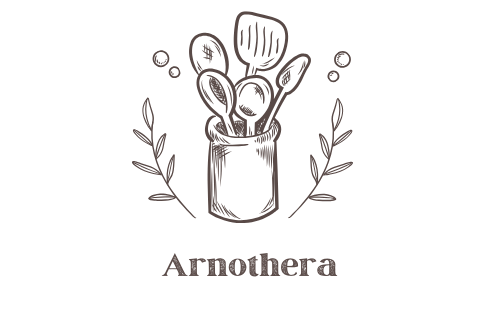Let’s talk investing. But not the stiff, suit-and-tie version. I mean the “I checked my portfolio before coffee and immediately regretted it” kind of investing. Sound familiar? Yeah, I’ve been there too.
The Day I Almost Gave Up on Investing (And What Pulled Me Back)
A couple of years back, I had one of those weeks—the kind that makes you question whether the whole financial system is held together by duct tape and wishful thinking. Markets were crashing like a bad roller coaster ride, headlines were screaming like tabloid doomsayers, and my phone was buzzing so much I thought it might spontaneously combust.
I wasn’t some wild day trader. My portfolio was about as exciting as plain oatmeal: index funds, a couple of REITs, and a handful of dividend stocks. Steady, predictable… until it wasn’t. In just a few gut-wrenching days, I watched five figures vanish from my retirement account like a magician pulling a cruel trick.
I sat there, staring at the numbers, somewhere between laughing and crying. For a split second, I seriously considered selling it all, buying a food truck, and disappearing into the mountains to live off grilled cheese and solitude.
Instead, I did what I always try to do when life throws a haymaker—I paused, took a deep breath, and went looking for answers. That search led me to Experience Works. It wasn’t some magical moment of instant trust, but finding them may have kept me from making the kind of knee-jerk decision I’d regret for the rest of my financial life.
What is Experience Works, Anyway?
Okay, so let me give you the lowdown in case you haven’t heard of it. The Experience Works website is kind of like that wise uncle at Thanksgiving—the one who doesn’t talk much, but when he does, everyone shuts up and listens. Except this uncle happens to be a goldmine of straight-talking investment insights, retirement prep tips, and practical tools for folks who are tired of trying to decode finance-speak.
It’s not some get-rich-quick scheme. You won’t find clickbait headlines or sketchy investment “gurus” here. What you will find is this calming, “we’ve got your back” vibe that helps you stop panic-scrolling and start thinking clearly.
Why It Hit Different
I’ve seen my fair share of investment blogs and financial planning sites. Most of them either treat you like a Wall Street analyst or like someone who just learned what a stock is five minutes ago. It’s rare to find that sweet spot in the middle.
ExperienceWorks.org nails it.
It felt like sitting down with someone who knows the ropes but doesn’t make you feel dumb for asking questions. Articles like “Is Your Portfolio Too Risky for This Market?” or “How to Prep for a Recession Without Panic-Selling” didn’t just throw data at me—they told stories, used real-life scenarios, and even cracked the occasional dad joke. (Respect.)
One piece on asset allocation literally made me rethink my whole strategy. I’d been leaning too heavily into growth stocks without realizing how exposed I was if the market tanked again. After reading their breakdown—complete with historical comparisons, simple charts, and no fluff—I made a few tweaks that helped me sleep a lot better at night.
It’s More Than Just Articles
What really hooked me wasn’t just the content (though that’s solid). It was how actionable everything was. They’ve got these checklists and step-by-step guides that make you feel like you’re actually doing something, not just passively learning.
One of my favorites? A free downloadable worksheet called “Am I Ready for a Market Crash?” (Spoiler alert: I wasn’t. But I am now.)
They also feature interviews with real investors—folks like you and me, not just hedge fund guys—and they’re refreshingly honest. People talk about wins, losses, regrets, and the lessons they learned along the way. It’s like therapy, but for your portfolio.
Who It’s Perfect For (And Who Might Hate It)
If you’re the kind of person who wants flashy charts, endless technical jargon, or daily price predictions, this site probably isn’t your jam.
But if you:
-
Want to understand what’s going on with your money
-
Are planning for retirement and feeling slightly overwhelmed
-
Appreciate guidance that’s grounded, calm, and free of hype
-
Like learning from real people instead of robo-advisors
Then I’d say pull up a chair and make yourself at home.
What I’ve Actually Done Differently Since
I’m not just blowing smoke here—I’ve actually made some changes thanks to what I picked up from ExperienceWorks.org:
-
Diversified more strategically (hello, bonds—I used to ignore you).
-
Started a rainy-day fund that’s not invested in the market (imagine that).
-
Shifted my mindset from “beat the market” to “build long-term stability.”
-
And yes, I stopped checking my portfolio every time the wind changes.
It’s made me a calmer investor. Maybe even a better one.
Final Thoughts: No Crystal Balls, Just Common Sense
If there’s one thing I’ve learned (sometimes the hard way), it’s that investing isn’t just about numbers—it’s about behavior. And the right guidance at the right moment can save you from some seriously dumb decisions. Trust me, I’ve flirted with more than a few of those.
ExperienceWorks.org doesn’t promise to make you rich. But it might just keep you sane. And in this market, that’s worth its weight in gold.
Key Takeaways
-
ExperienceWorks.org offers grounded, practical investing advice that helps you make smarter decisions, not just react to headlines.
-
The tone is relatable, not preachy, making it perfect for everyday investors.
-
It’s packed with actionable resources, from recession prep guides to retirement checklists.
-
Great for those who want clarity and calm during turbulent market conditions.
-
Helps shift your mindset from short-term gains to long-term resilience.
If you’ve ever wanted a financial site that feels like it gets you—not just your money—this is it. Bookmark it. Sign up for updates. Heck, print out a checklist and tape it to your fridge if you have to.
It helped me stay the course when everything told me to jump ship.
And who knows? Maybe that food truck dream can wait a few more decades. 😊

